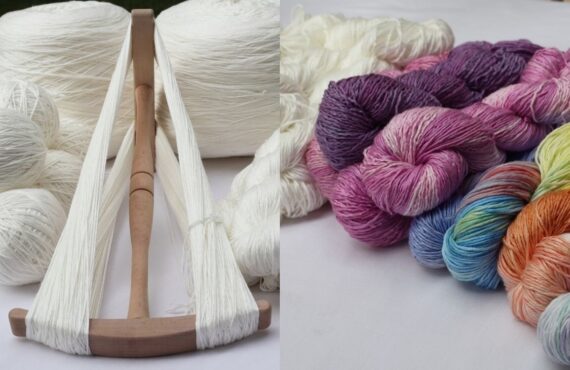Materials
Materials For Carpet
As a carpet is made of pile yarns; a primary backing; a secondary backing; adhesive binds the primary and secondary backings; and cushioning is usually placed underneath the carpet to make it more comfortable and soft to walk on. Carpets are available in multiple styles, colors, patterns, textured, weave types, and materials. The most important factor to consider when it comes to rug durability is choosing the right carpet material.
Majorly, carpet material is divided into two categories – natural carpet material and synthetic carpet material. The most common natural carpet fibers are wool, silk, jute, and cotton, while synthetic carpet fibers are nylon, polyester, polypropylene, and acrylic.
Natural Fibers
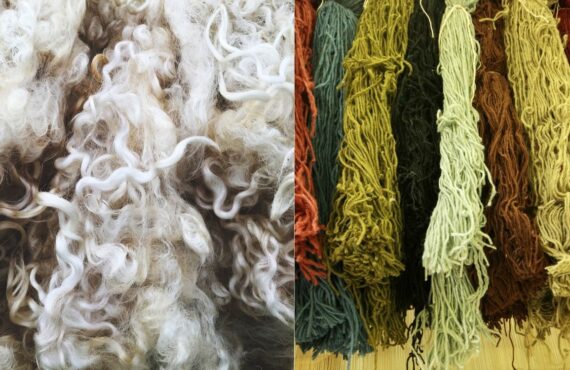
Wool: As one of the most popular and renewable natural fibers, wool is particularly well-suited to being used as a carpet fiber since it has excellent resistance to footfall, as well as a knack for remaining beautiful for years to come. Moreover, wool carpets are naturally resistant to combustion, making them a great option for anti-static floors. Tibet wool is imported as scoured wool with strong fibers, good luster, and a high resilience value. The New Zealand wool is of 36 microns, 100 mm barb length, and is identified as type 128. Also available in the market are British wool products that meet regulatory standards.
Silk: After wool the most luxurious yarn is Silk. Compared to any other material, silk is the most expensive yarn and has an exceptional reputation as a textile yarn mostly because it has a soft touch, a comfortable feeling, and a shiny appearance. Silk is also one of the strongest natural fibers thanks to its filament fibers, making it the strongest material in nature. In addition to being the most beautiful carpet yarn, silk has many advantages: it is mold-resistant, it does not store static electricity, and it does not shed.
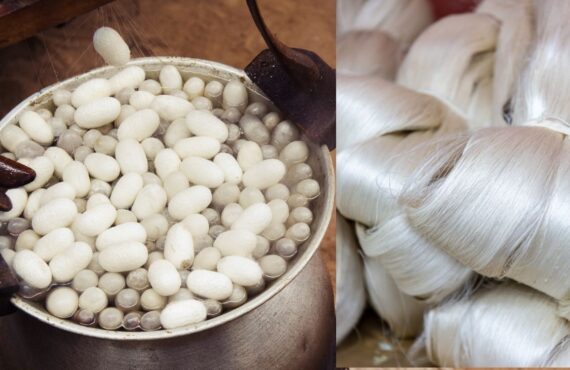
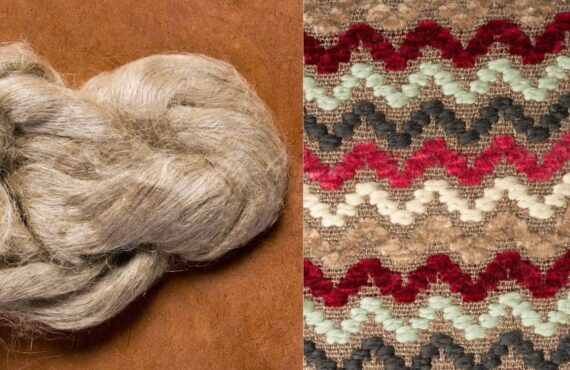
Jute: From a traditional standpoint, jute is used mostly for carpet backing, but it is becoming increasingly popular as a natural fiber floor covering and is great for rugs because of its depth of texture. One of our most environmentally-friendly fibers, jute is easy to grow and is a renewable material, so new trees do not have to be planted to regrow them. The material is biodegradable, does not conduct static electricity, and is noise insulating as well as having low thermal conductivity. Growing jute requires little energy or space. It is also not an invasive species.
Cotton: The most renowned plant-based carpet yarn is cotton. Cotton is the most popular fabric used to make clothes, not only for its comfort but also due to its durability. Since cotton is a plant, it can absorb up to 8.5% of its weight in water, making it the perfect material for absorbing perspiration or absorbing moisture in the bathroom or kitchen. Moreover, cotton is an insulator that keeps heat close to the body, making cotton clothes and carpets feel so comfortable.
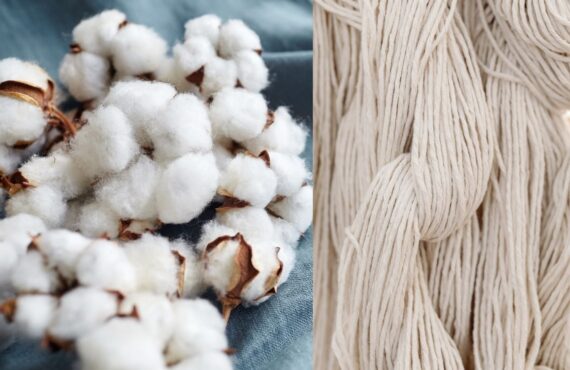
Synthetic Fibers
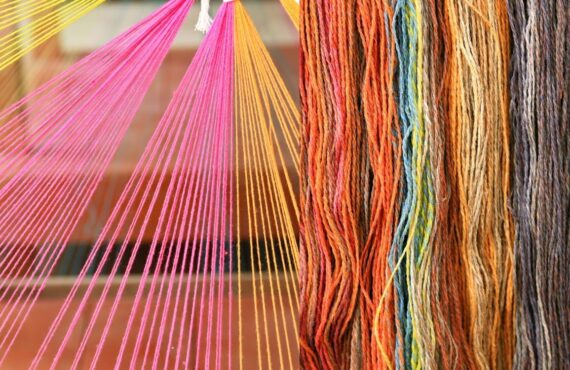
Polypropylene: Also known as Olefin, polypropylene is a synthetic carpeting material that is long-lasting and ideal for indoor use and outdoor use. Due to the similarity of polypropylene filaments to wool, this rug material is used as a substitute for natural wool. The fibers of polypropylene carpet are strong, fade-resistant in direct sunlight, and low-maintenance when compared to natural-fiber carpets. The polypropylene material is also robustly resistant to mold, mildew, stains, shedding, and water.
Nylon: Another widely accepted synthetic carpet fabric is nylon. Nylon carpet fibers are soft, highly durable, stain-safe, and abrasion-resistant. The color of nylon filaments can be dyed rather easily and remains intact for a long time. Nylon dries quickly, which makes it an ideal option for bathroom and outdoor areas. Despite their high elasticity, these rug strands can hold heavyweight and still maintain their shape for a long time. Under your furniture, you can stretch the nylon rug, and it will be back to its original shape once you remove the carpet. It is possible to make almost any type of carpet out of nylon, in virtually any price range, dye it and finish it in any way you choose.
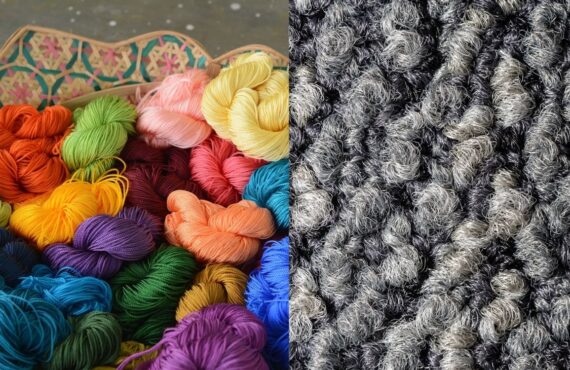
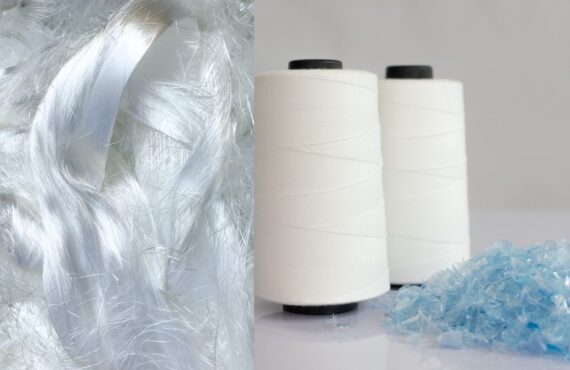
Polyester: Carpets made from polyester fibers are the more cost-effective option when compared to natural rug materials. A polyester carpet will keep its colors and pattern for a long time since it is stain- and fade-resistant. Polyester is usually weaved into a loop or cut loop. Compared to other synthetic carpet materials, these rug filaments are less flexible. The nylon carpet in your bedroom or playroom is easy to clean and goes well with everything in the room. Carpet made of polyester is prone to flattening when furniture is put on it, making it a bad choice for rooms where traffic is high. Oil stains are difficult to remove from polyester Kaleen if they appear on your carpet.
Acrylic: A carpet made of Acrylic does not exist completely, but it is often used in other carpets. As an alternative to a pure wool carpet, it is often blended with wool to help reduce the price. Acrylic rug filaments are resistant to static electricity, stains, and moisture. It can also handle the exposure to sunlight and still maintain the color of the carpet for a long time. Acrylic carpet fibers have a low level of durability, so you can not use this for areas of your house that see high traffic. Although acrylic is rather difficult to dye, it is colorfast, washable, and feels and appears like wool, making it ideal for rug making.
